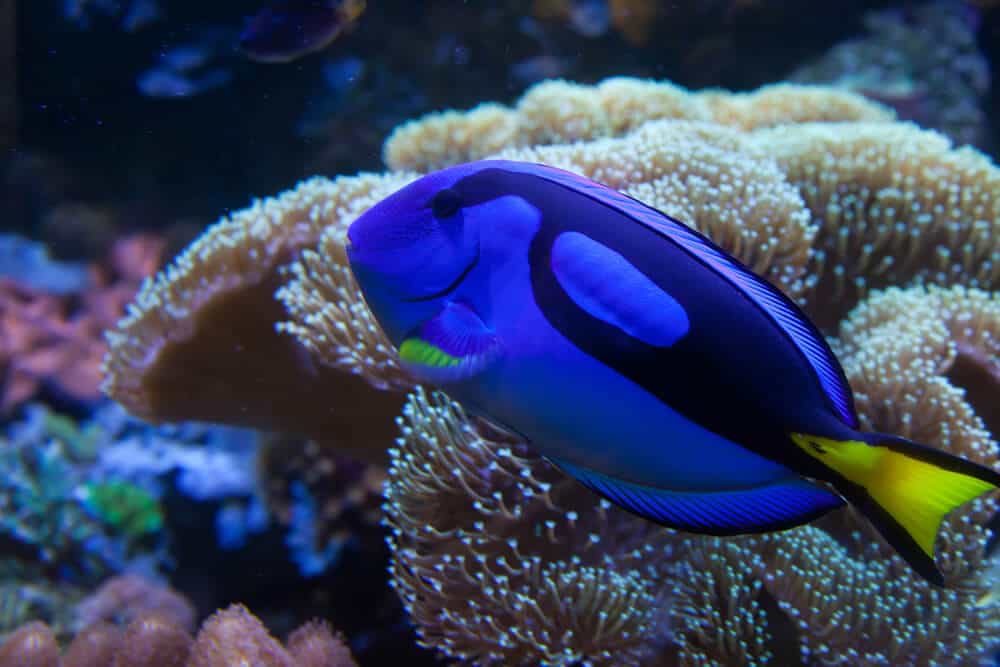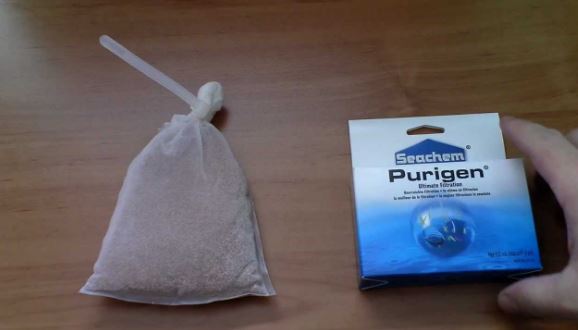
Aquariums are closed systems that must be regularly maintained to ensure the health of the ecosystem it contains. Key to that health and maintenance is a functioning filtration system. Understanding the purpose and process of aquarium filtration helps you make an informed decision when choosing your next aquarium filter.
Contents
1. The role of filtration systems within aquarium tanks
Filtration systems serve two important functions inside the tank:
1. To remove waste such as uneaten food, byproducts of digestion and respiration, and decaying material;
2. To circulate water throughout the tank.
Waste removal
Physical and chemical waste is constantly produced inside the tank: Uneaten food floats throughout the water; plants and fish create biological waste; dust and other debris sometimes enters the tank. Without a filter, this waste would accumulate within the tank and poison your aquatic life.
Physical waste such as food and debris accumulate on aquarium structures causing damage. But it also decomposes and releases toxic chemicals injury the water. Biological waste from breathing and digestion also contaminates the water.
Without a filtration system, these physical and chemical contaminants have no way of escaping the area. And aquatic life can’t leave the area in search of a cleaner environment. Concentrations of these items increase until the nearby aquatic life has been suffocated and poisoned to death.
Circulation
Water movement is important because it transports oxygen and debris, stabilizes temperature, and provides a current for fish. As a closed system, aquariums lack the ability to actively circulate water. Adequate filtration keeps the environment from becoming stagnant.
Circulation is instrumental to bringing oxygen into the tank. Oxygen exchange takes place at the water’s surface; as water moves around the surface area increases which allows more oxygen to get in contact.
The agitated water also helps move physical debris into the filter’s intake. Without adequate circulation, the tank develops “dead zones” where debris accumulates.
Water temperature is stabilized by circulation because it prevents pockets of cold or hot areas from developing. Without circulation, cold water would sink to the bottom of the tank, and warm water would stay on top.
Also, circulation mimics the natural motion of water that fish are used to swimming through. Water currents encourage fish to swim as they would in their natural habitat.
2. Most popular types of aquarium filters
There are many filters on the market that can perform the three types of filtration needed to keep your tank looking and performing its best. Filters come in a variety of styles with differing features to match any price point or tank configuration. Most do require a small power source. The most popular types of filters are:
1. Canister filter (External filter)
2. Internal filter
3. Hang-on-back (HOB) filter (Power filter)
4. Sponge/air-powered filters
3. How to choose the right type of filter for your aquarium tank
The biggest concern when deciding which filter to purchase is the size of your tank. You also need to consider the needs of your fish, how well you maintain your equipment and your budget.
Tank volume affects your choice
It’s recommended that the entire volume of water contained in the tank flow through the filter at least four times an hour. For example, if you have a 20 gallon tank then your filter needs to be able to move 80 gallons per hour. This ensures a constant flow of clean fresh water for your habitat.
Recommendations
Tanks over 30-gallon size work function best with external canister filter systems. These large tanks require more power and put more strain on the water treatment units. Your filter should have a flow rate of at least 120 gallons per hour.
Tanks smaller than 30 gallons benefit from internal filter or HOB filters . They sufficiently move water without potentially damaging small fish.
Hospital and breeding tanks usually function well with air-powered or sponge filters. These are preferable because they have no moving parts in the tank that could further damage sick or newly hatched animals.
4. Aquarium filtration types
Water treatment of freshwater aquariums use a combination of three filtration methods to remove physical and chemical impurities: mechanical, biological, and chemical. Each water filtration method requires its own media and follows its own process.
All filtration systems are effected by water flow, and tank load. None of the systems can work unless the water flows through it. Heavily populated tanks increase the load of your filtration systems by producing more waste. Adjust the size of your water treatment system accordingly.
Mechanical filtration
Mechanical filtration removes physical contaminants from the water. It works like a strainer; water passes through media that catches any pieces of material. How well it works depends on the coarseness of the media, how much water moves through the filter, and how often the filter is cleaned.
Mechanical filters use several layers of media of differing coarseness. Water first passes through coarse material such as Fluval prefilter media to remove larger pieces of debris. It then passes through progressively finer materials- Blue Bonded filter pads to Ehfisynth to Micron filter pads- to remove smaller and smaller particles.
Each layer of material can only filter out certain sizes of material. The more coarse the material the larger the debris it can remove. Water flows through progressively finer material so that even very small deposits can be removed from the water.
Ideally, you want the water to flow through the layers; you don’t want it pushed, but you also don’t want it just sitting. If the current is too strong then the deposits don’t have enough time to get caught in the filter media. If the water moves too slowly then clogs occur and the water doesn’t get filtered.
Media for mechanical filtration will need to be cleaned often, especially if you use only extremely fine materials. Remember not to use bleach or other cleaning agents because it leaves residue that interferes with the chemistry of the tank.
Chemical filtration
Chemical filtration is used the least often of all methods. It involves using activated carbon or other chemical resins as media to trap dissolved impurities. Chemical filtration can be achieved with protein foam skimming or oxidation with ozone but it’s more commonly done with activated carbon.
Activated carbon works by trapping substances such as heavy metals, antibiotics, and dissolved proteins inside its microscopic pores. Chemical resins attract specific chemicals to it.
Other media used for chemical filtration include zeolite, peat moss, and calcium hydroxide.
It’s important to use the correct amount of activated carbon inside the tank because it works very aggressively. Too much of it can deplete oxygen levels. The suggested amount is about 1 cubic inch of activated filter carbon for 2 gallons of water.
Biological filtration
Biological filtration use microorganisms, usually bacteria, to convert pollutants into a less toxic substance. Ammonia is the most prevalent impurity in the tank removed by biological filtration.
Ammonia is produced when organic matter decays, and when fish urinate. In addition to the harm it causes fish, it also contributes to algae growth. Biological filtration involves creating a colony of inert bacteria that will eat ammonia.
The bacteria naturally convert ammonia into nitrates, and then into nitrites. Some plants can also use this Nitrogen waste as fertilizer but not in sufficient amounts to change water quality. It’s not enough to rely on your plant-life to cycle the Nitrogen waste.
The colony, once established, is difficult to kill and can survive for up to three years. Unlike the mechanical filter, the media used for biological filtration does not require regular cleaning.
A good way to start a biological filter is to remove some from an already established colony. If that’s not possible you should allow your colony to develop before adding fish to your tank. This will prevent contaminants from building up.
The amount of time it takes for the colony to filter the tank depends on the size of the tank, and the number of fish it contains. A large tank requires a larger filtration system than a small one. Also, tanks with several fish require a larger system than those with few fish.
5. Conclusion
Choosing the right type of filter is very important to the health and safety of your aquatic life. Adequate water treatment by the right filter will remove physical and chemical containments ensuring a good environment within your tank.






